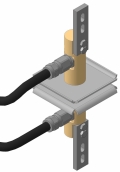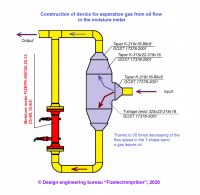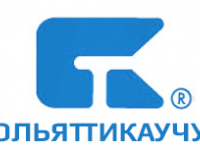The dielectric moisture meter of FIZEPR-SW100 series is designed for measuring permittivity and moisture content in liquid and bulk materials. The feature of the moisture meter is a direct method of permittivity measurement which does not require preliminary calibration.
Various sensor design versions allow using the FIZEPR-SW100 moisture analyzer for control of any materials. Moisture measuring range - from 0 to 100% - provides a wide area of instrument application.
Click to go to next slide
Download as PDF document
Using of moisture meters with ceramic protective plates has led to loss of ACS dosing inert materials and water accuracy because of high irregularity of measurement results. What can you say about the accuracy of FIZEPR-SW100 during the measurement of bulk materials? Its operating principle? Its price?
Reply:
As to the problems with the measurement of moisture using sensors you listed, sensors of their type have only surface layer of the ceramic plate as a measurement area.
It is easy to verify in the following experiment. Put a stack of sheets of paper or magazines that has a thickness of 1-2 cm on a ceramic sensor surface. This stack simulates the surface layer of the material. Then put your hand over the sensor and see how its readings change.
In order to avoid a mistake with amount of water, it is necessary to increase the volume of material analyzed. We performed several experiments: we took some samples of crushed stone and sand from different areas of the dispenser (this is easy to do: after opening the gate several samples of rolling sand and gravel were taken). Dosing unit volume is about 1 cubic meter. We have known that for sand and carbonate gravel moisture within this small volume can vary more than by 1% with an average moisture of 7.6% (moisture value was determined by drying).
As for the moisture meter FIZEPR-SW100, its measurement area includes material disposed between its probe and the hopper wall and also located in a cylindrical area about 20-30 cm in radius around the probe. The sensor with the flat-topped probe (nominal probe length - 24 cm) analyzes the area of about 20 liters. The direct probe (from one hopper wall to another) determines the average moisture at a significantly greater volume of about 1 cubic meter (depending on the size of the probe and the hopper).
The price of any version of the moisture meter for bulk materials is 68,971 RUB, including VAT.
Operating principle overview.
The probe (stick) is a half-wave TEM-wave resonator wherein the second conductor is the tank wall. The stick end is short-circuited because it is connected to the tank wall. Complex refractive index is determined using resonance frequency then permittivity and moisture (by calibrating tables) are calculated. The moisture meter controller includes calibrating tables for sand, carbonate rubble and granite gravel. The user can easily edit these tables if necessary. At that PC screen draws all data – diagrams of moisture dependence on the refractive index (or permittivity) for a temperatures set.
Dear Sirs, I am interested in your products, especially in-line moisture meters to make "Measuring of burden raw material moisture on a conveyor" for agglomeration production. I would like to receive additional information on the possibilities of your sensors for solving this problem with approximate cost and equipment list. I am also interested in the ability to integrate your equipment with Siemens controllers.
Reply:
According to operating principle, the device belongs to dielectric ones. As capacitive sensors, it measures permittivity of the substance and then determines the moisture using permittivity.
Unlike other dielectric devices, our instrument is also a radio device. It measures the absolute value of the permittivity. Moreover, not a narrow strip of material near the transmitter (ceramic plate) is analyzed, but a large amount of not less than 10 liters.
This is important since bulk material moisture typically is not uniform in volume. Also the moisture meter is used on lump materials with granular size up to 5 cm.
The device can be installed above the conveyor belt. However, there are changes of density (lumpiness) of bulk material and amount of air between the particles during belt movement. For any of moisture meter (except for optical) this leads to measurement errors.
Therefore if high accuracy is needed, we recommend to install the sensor in the hopper, dispenser, or at least in the tray in which the density of the material is more stable than on the conveyor belt.
Its output signals: digital MODBUS RTU and current 4-20 mA signals are simultaneously transmitted.
In your case of application to estimate the accuracy it is necessary to know the name of burden material and moisture measuring range.
Презентация подготовлена для 6-го научно-практического семинара «Проблемы калориметрии сгорания твердых, жидких и газообразных топлив», прошедшего в ФГУП «ВНИИМ им. Д.И. Менделеева», Санкт-Петербург, 21 - 25 апреля 2014г.
Загрузить в формате PDF
Применение влагомеров с керамическими защитными пластинами из-за большой нестабильности результатов измерений привело к «раскачиванию» АСУ дозирования инертных и воды. Что можете сказать о точности FIZEPR-SW100 при измерении сыпучих ? Принцип действия? Цена?
Reply:
Что касается проблем с измерением влажности с помощью указанных Вами датчиков, то они обусловлены следующим: у датчиков такого типа область анализа - лишь приповерхностный слой у керамической пластины.
Это несложно проверить в следующем эксперименте: на керамическую поверхность датчика положите стопку листов бумаги или журналы, толщиной 1-2см, моделирующие приповерхностный слой материала. Затем подносите руку к датчику и смотрите, как меняются его показания.
Чтобы не ошибиться с дозировкой воды необходимо увеличивать анализируемый объем материала. Мы проводили эксперименты: брали из дозатора по несколько проб щебня и песка из разных его областей (это сделать несложно: после открытия шибера брали несколько проб сыплющегося песка, щебня). Объем дозатора - около 1 куб.м. Получили, что и для песка и для карбонатного щебня влажность в пределах этого небольшого объема может меняться больше, чем на 1% при средней влажности 6-7% (величину влажности определяли сушкой).
Что касается влагомера FIZEPR-SW100, то в его область анализа попадает материал, расположенный между его зондом и стенкой бункера, а также находящийся в цилиндрической области радиусом около 20-30см вокруг зонда. Датчик с П-образным зондом (номинальная длина зонда -24см) анализирует область примерно в 20литров. Прямолинейный зонд (от стенки - до стенки бункера) определяет среднюю влажность по значительно большему объему - порядка 1 куб.м (в зависимости от размеров зонда и бункера).
Несколько слов в пояснение принципа действия.
Зонд (пруток) является полуволновым резонатором ТЕМ-волны, причем вторым проводником являются стенки резервуара. Пруток на конце короткозамкнут - соединен со стенками резервуара. По частоте резонанса определяется комплексный показатель преломления, затем вычисляется диэлектрическая проницаемость, а по градуировочным таблицам - влажность. В контроллер влагомера введены градуировочные таблицы для песка, карбонатного щебня и гранитного гравия. Эти таблицы при необходимости пользователь легко может корректировать, при этом на экране ПК прорисовывается вся характеристика - графики зависимости влажности от показателя преломления (или диэлектрической проницаемости) для набора температур.
Добрый день, интересует ваша продукция, а именно поточные влагомеры для решения задачи «Определения влажности шихтового сырья на конвейере», для агломерационного производства. Хотелось бы получить дополнительную информацию о возможностях ваших датчиков, для решения данной задачи, с возможной стоимостью и комплектацией оборудования. Так же интересует возможность интеграции вашего оборудования с контроллерами фирмы Siemens.
Reply:
По принципу действия прибор относится к диэлькометрическим, т.е. как и емкостные датчики измеряет диэлектрическую проницаемость вещества и далее, по диэл. проницаемости определяет влажность.
В отличие от других диэлькометрических приборов наш прибор является еще и радиоволновым, измеряет абсолютное значение диэлектрической проницаемости. Причем анализируется не тонкий слой материала вблизи излучателя (керамической пластины), а большой объем не менее 10...20 литров.
Это важно, т.к. влажность сыпучего материала обычно неоднородна по объему. Кстати, влагомер применяется и на кусковых материалах с размерами гранул в 5см и более.
Прибор может устанавливаться над лентой конвейера. Варианты установки можно посмотреть здесь:
http://fizepr.ru/projects/vnedrenie-vlagomera-peska-na-konveiere
http://fizepr.ru/vlagomer-peska
По выходным сигналам: одновременно выдается цифровой сигнал MODBUS RTU и токовый 4-20мА.
Чтобы говорить о точности для вашего случая применения, необходимо знать наименование шихты и диапазон измерения влажности.
Город:
Тольятти 53° 31' 14.5812" N, 49° 17' 4.8048" E
Город:
Воронеж 51° 40' 21.198" N, 39° 9' 18.9828" E
Город:
Сызрань 53° 9' 35.8092" N, 48° 26' 58.9452" E
Город:
64° 35' 10.266" N, 30° 34' 29.8236" E




































